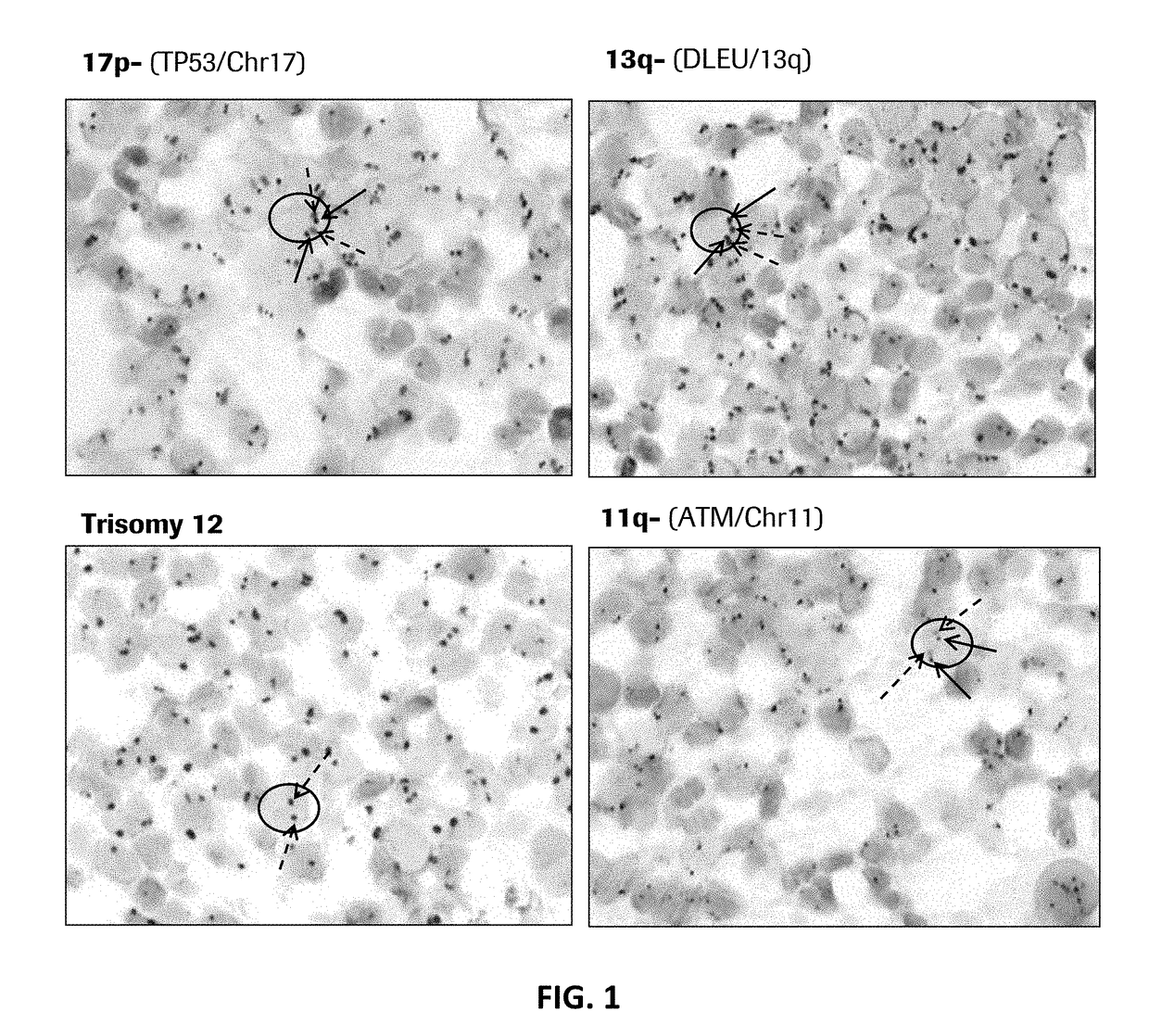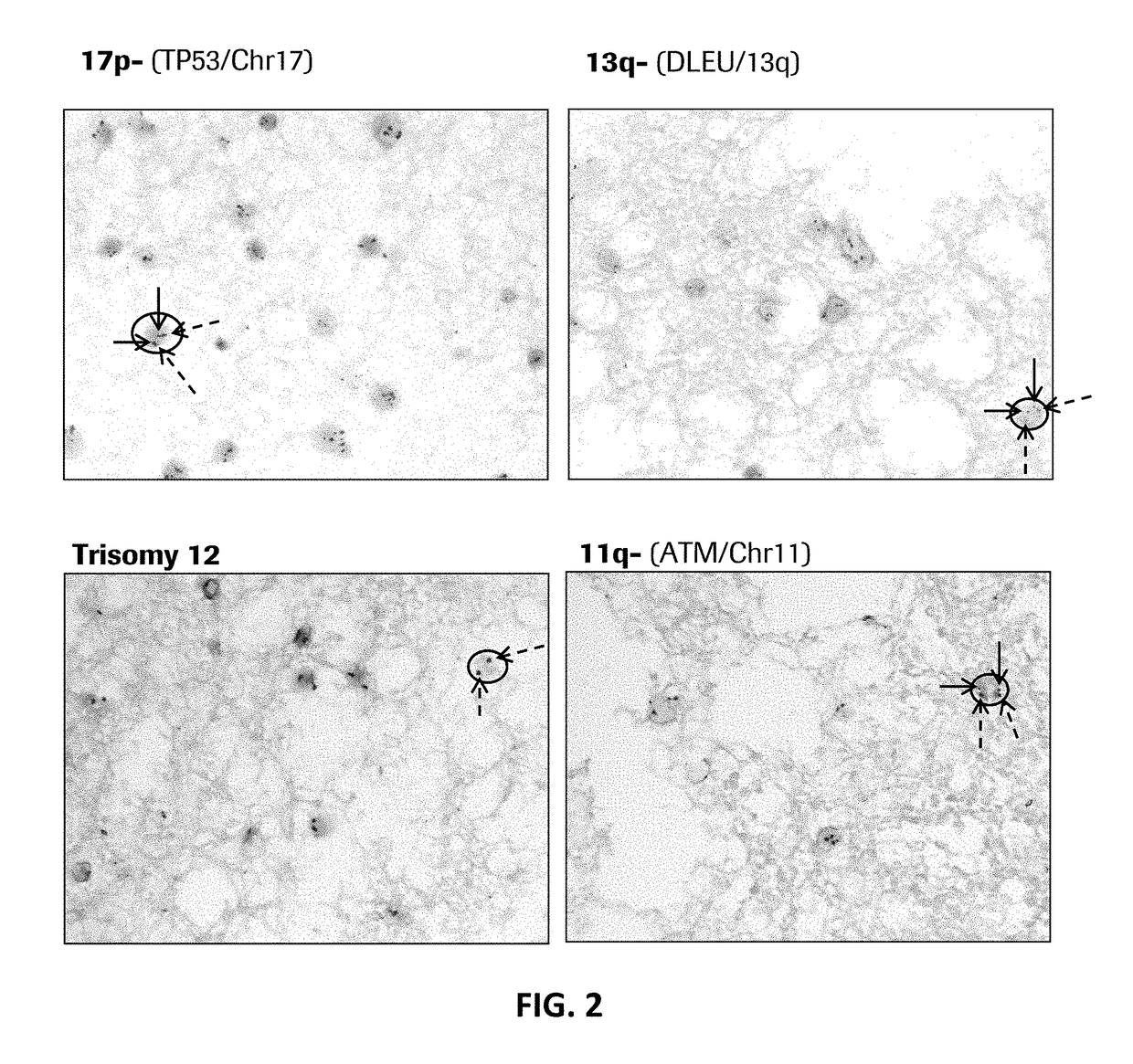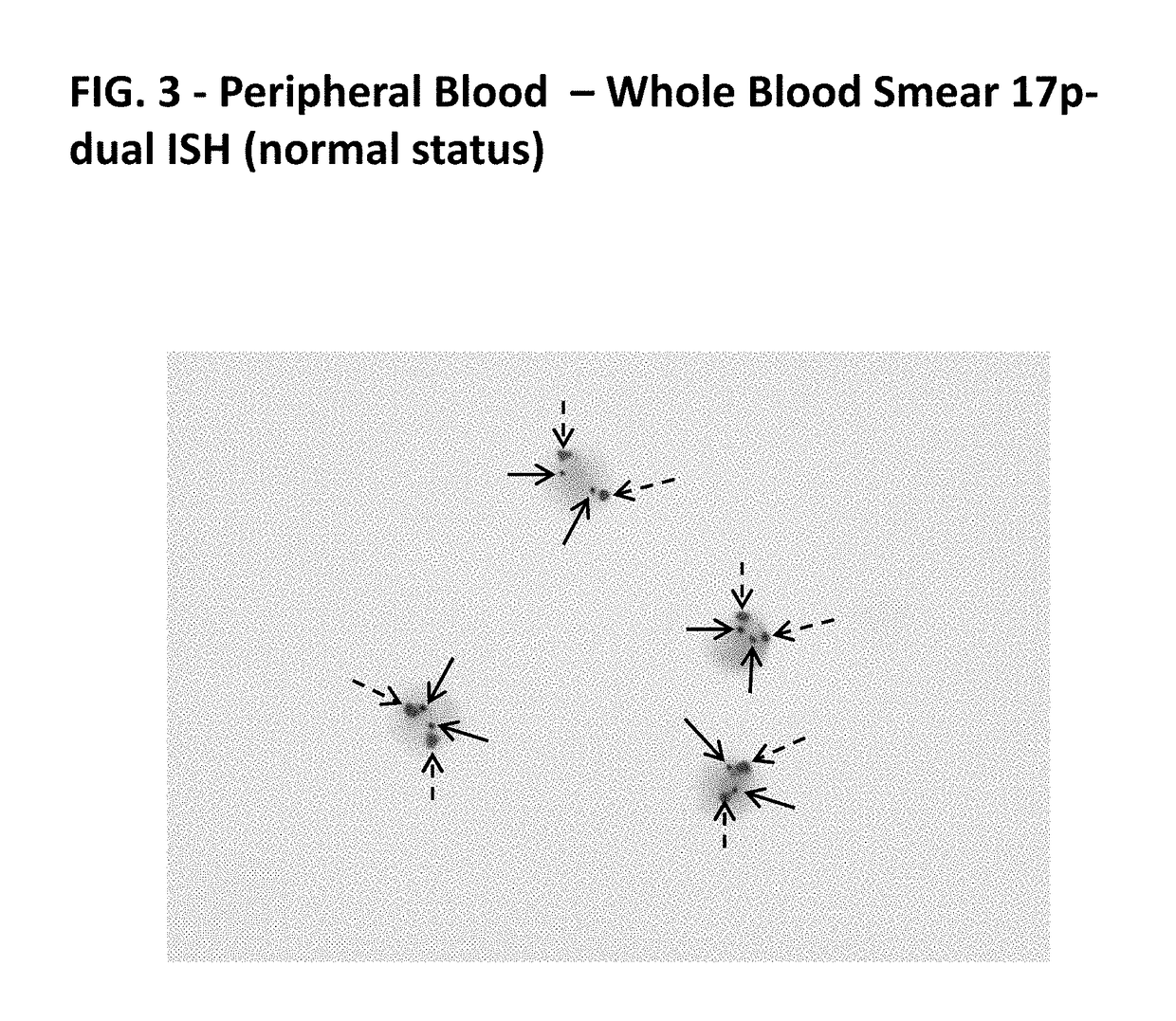MULTIPLEX TP53/CEN17/B CELL GENE-PROTEIN CO-DETECTION ASSAY AND UNIQUELY SPECIFIC PROBES FOR 19q12, INSR, ATM, DLEU2, TP53, AND 13q12
a tp53 and cen17 technology, applied in the field of immunohistochemistry and in situ hybridization, can solve the problems of large capital investment, high diagnostic cost, and fish that does not incorporate the context of tissue for the reader/corer, and achieve the effect of quick identification of patients
- Summary
- Abstract
- Description
- Claims
- Application Information
AI Technical Summary
Benefits of technology
Problems solved by technology
Method used
Image
Examples
example 1
sis
[0207]Abnormal cytogenetics are found in the majority of patients with CLL, and each subtype is associated with differentiated frequency, outcome, and suggested treatments (see Table 3).
[0208]Example 1 demonstrates that probes of the present disclosure can detect such abnormalities via in situ hybridization (ISH) on formalin fixed paraffin embedded bone marrow / trephine samples.
[0209]A. Preparation of Reagents:
[0210]DNA probes were labeled with either DNP or DIG using standard reaction conditions. Specificity of each probe was verified using CGH Target Metaphase spread. Functionality of each probe was determined by standard dual ISH using the U Dual Color ISH Open Probe procedure on standard cancer tissues supplied by Ventana Medical Systems, Inc.
[0211]B. Reagents
(if commercially available from Ventana Medical Systems Inc., reagents are listed with the associated part number).
[0212]TP53 / Chr17:[0213]TP53-DNP [30 ug / ml] (mixture of 10 probes according to SEQ ID NOs: 51-60);[0214]AS...
example 2
Gene-Protein Assay for CD79a / TP53 / CEN17
[0264]This example describes a multiplex gene-protein assay for detection of CD79a protein, TP53 DNA, and chromosome 17 centromere DNA in a single sample. The staining strategy consists of essentially three staining steps: (1) CD79a protein; (2) TP53 Gene; and (3) CEN17. An overview of the staining strategy is illustrated at FIG. 6.
[0265]In the first detection, an antibody specific for CD79a 1 is contacted with the sample. A species-specific secondary antibody 2 conjugated to a first antibody-reactive group (such as a hapten) is then applied to the sample, which binds to the primary antibody 1. A tertiary antibody 3 is then applied to the sample. The tertiary antibody 3 is specific for the antibody-reactive subunit of the secondary antibody 2. The tertiary antibody 3 also is labeled with a detectable label. After reaction to visualize the detectable label, regions at which the primary antibody has bound appear as a first color. In the example i...
embodiment 1
[0270]A multiplex method for co-detecting a B cell marker protein, TP53 genomic DNA, and chromosome 17 centromere DNA in a sample on a single slide, said method comprising:
[0271]staining the B cell marker protein by contacting the sample with a B cell marker protein-specific antibody and contacting the sample with a first chromogen component for the B cell marker protein-specific antibody, the first chromogen component is adapted to emit or make visible a first color, wherein the presence of the first color indicates the presence of the B cell marker protein; and
[0272]staining TP53 genomic DNA and staining chromosome 17 centromere DNA by contacting the sample with a TP53 genomic DNA-specific nucleic acid probe and with a chromosome 17 centromere DNA-specific nucleic acid probe, and contacting the sample with a second chromogen component for the TP53 genomic DNA-specific nucleic acid probe and with a third chromogen component for the chromosome 17 centromere DNA-specific nucleic acid...
PUM
| Property | Measurement | Unit |
|---|---|---|
| Fraction | aaaaa | aaaaa |
| Fraction | aaaaa | aaaaa |
| Fraction | aaaaa | aaaaa |
Abstract
Description
Claims
Application Information
 Login to View More
Login to View More - R&D
- Intellectual Property
- Life Sciences
- Materials
- Tech Scout
- Unparalleled Data Quality
- Higher Quality Content
- 60% Fewer Hallucinations
Browse by: Latest US Patents, China's latest patents, Technical Efficacy Thesaurus, Application Domain, Technology Topic, Popular Technical Reports.
© 2025 PatSnap. All rights reserved.Legal|Privacy policy|Modern Slavery Act Transparency Statement|Sitemap|About US| Contact US: help@patsnap.com



